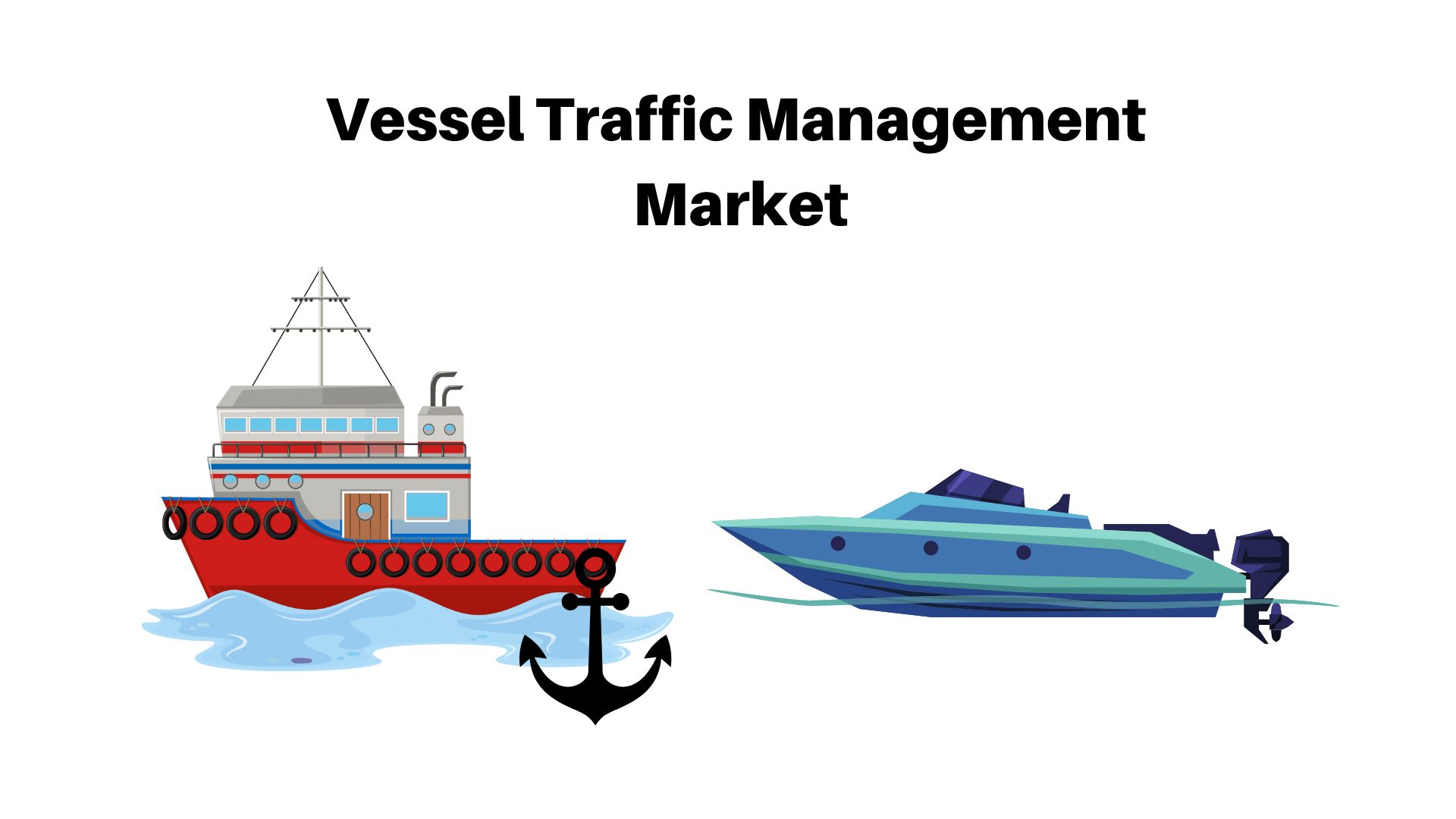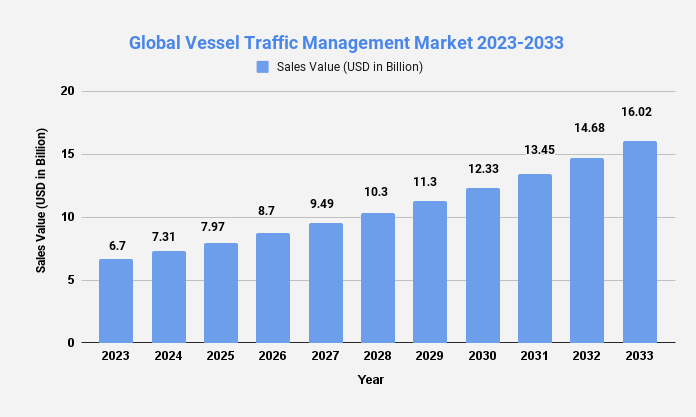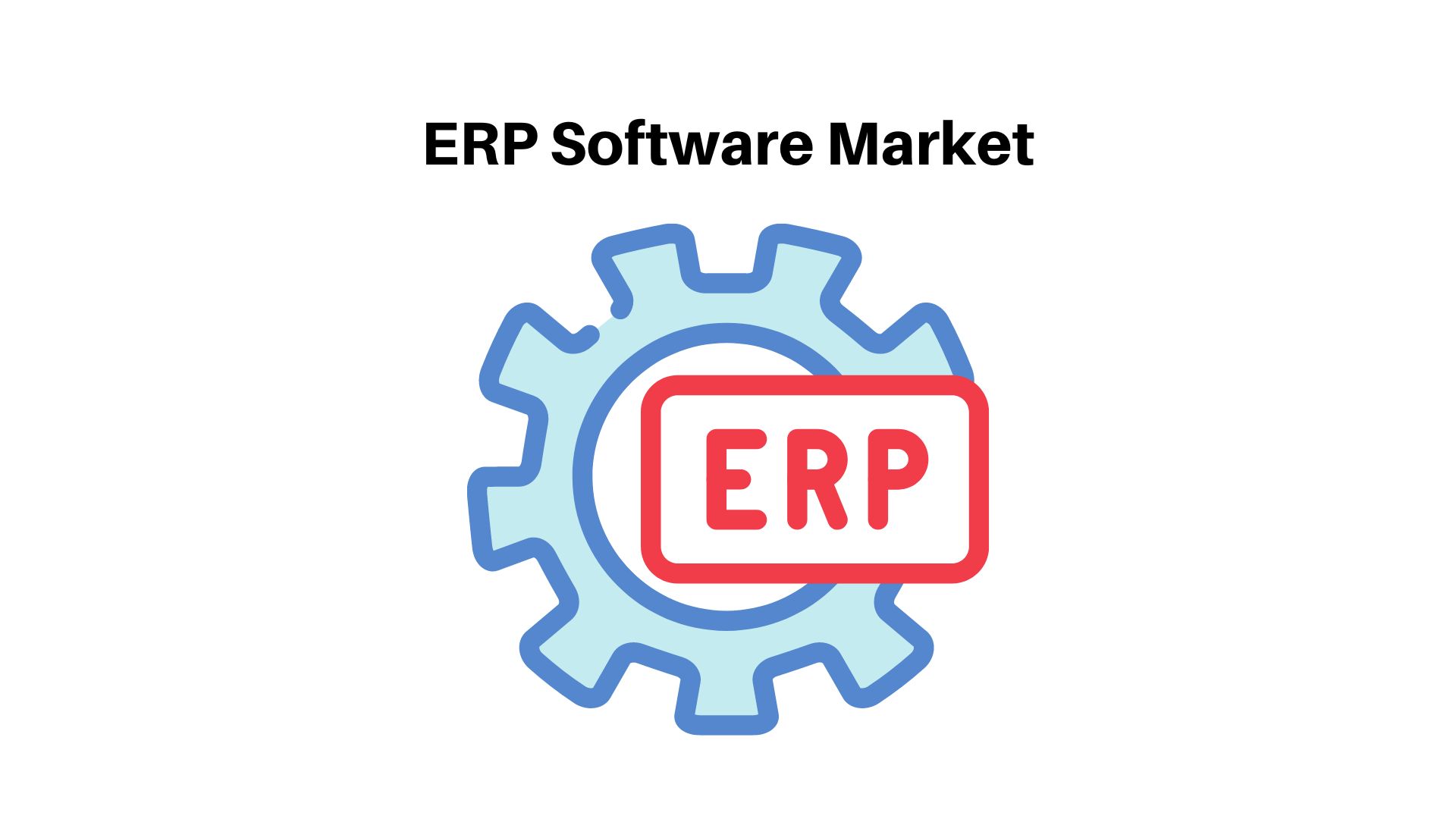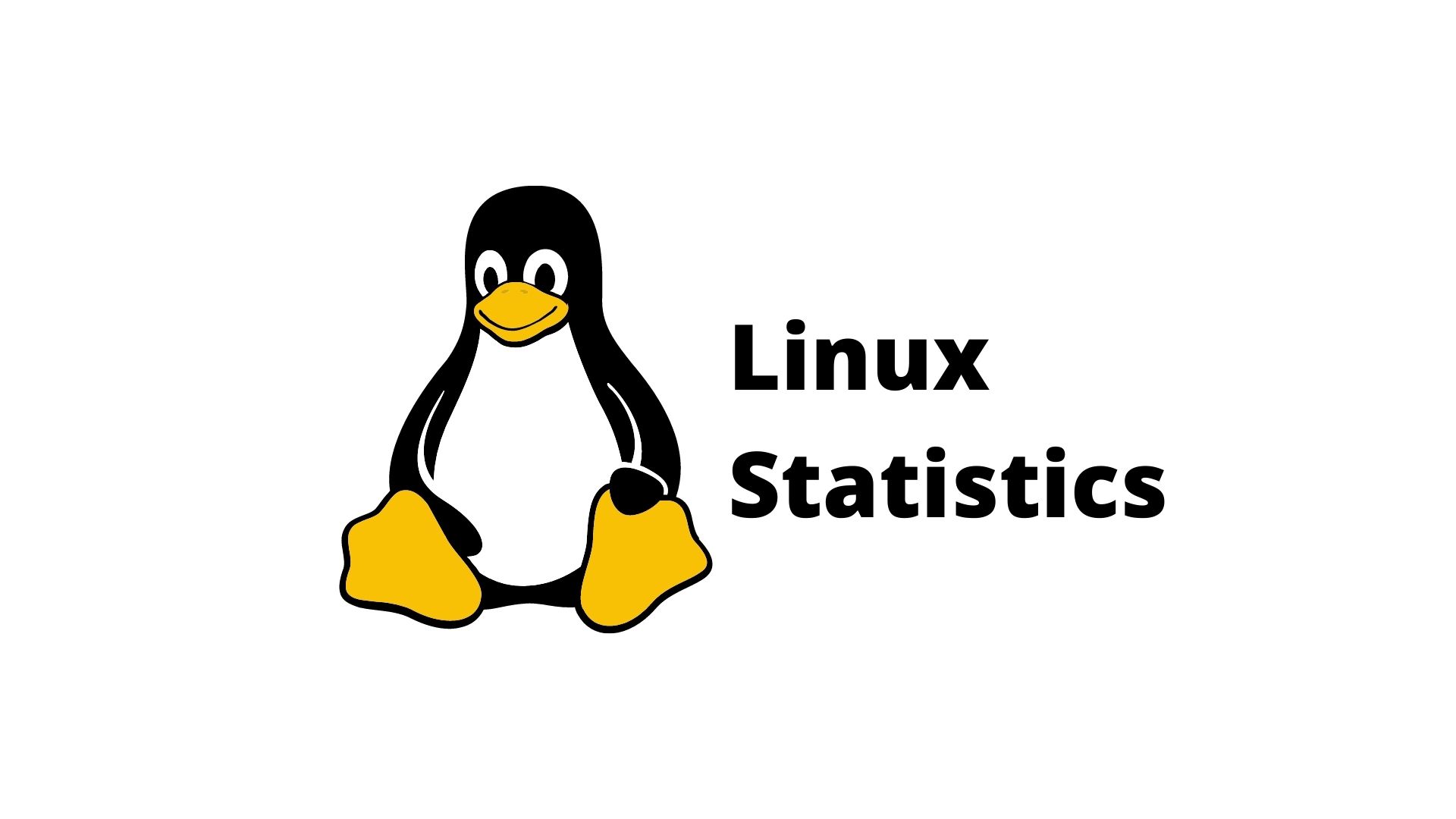Vessel Traffic Management Market Size Estimated USD 6.7 billion in 2023, growing at a CAGR of 9.11%

Page Contents
Market Overview
Published Via 11Press: Global Vessel Traffic Management Market is a system that helps manage and monitor vessel traffic in specific areas such as ports, harbors, and waterways. The purpose of VTM is to guarantee the safe and efficient movement of vessels while minimizing the risk of collisions, groundings, and other incidents that could cause property damage, environmental deterioration, or loss of life.
The Global Vessel Traffic Management market is valued at USD 6.7 billion in 2023 and is projected to reach USD 16.02 billion by 2033, growing at a CAGR of 9.11% from 2023 to 2033
Radar and Automatic Identification System (AIS) equipment to track the position, course, and speed of vessels in an area. VHF radio communication to exchange information between ships and VTM operators on shore. Electronic Chart Display and Information System (ECDIS) to display real-time details about ship position and navigational hazards. Traffic Separation Scheme (TSS) with designated shipping lanes to guide vessel traffic flow. Vessel Traffic Services (VTS), provided by trained operators who monitor vessel movements while providing guidance to captains.

Key Takeaways
- The Vessel Traffic Management Market expected to reach USD 6.7 Billion in 2023.
- Forecasted compound annual growth rates between 2022 and 2032 is 9.11%.
- By 2032, the Vessel Traffic Management Market is projected to reach USD 16.02 Billion.
- VTM systems provide a real-time, integrated view of vessel visitors in an area, including each industrial and leisure vessel.
- The essential dreams of VTM are to beautify safety, optimize site visitors flow and decrease the possibility of accidents or incidents at sea.
- VTM systems generally consist of radar, AIS (Automatic Identification System), CCTV cameras and radio communications. VTM facilities serve as a central factor for monitoring ship traffic and coordinating communications between ships and shore-based personnel.
- To guarantee compliance with security standards and promote nice practices in vessel operations, the VTM machine is supported by quite a number of regulations and guidelines. Furthermore, these structures have a vital function in managing the environment have an impact on of delivery activities via assisting minimize emissions, and mitigate oil spills and different workable environmental hazards.
Request For Sample Report Here: https://marketresearch.biz/report/vessel-traffic-management-market/
Regional snapshot
- North America: Shipping management in North America is mainly overseen by way of the United States Coast Guard and Canadian Coast Guard. These companies collaborate to oversee transport on the Great Lakes, St. Lawrence Seaway, East and West coasts alike.
- Europe: Ship administration in Europe is overseen by a number of organizations, such as the European Maritime Safety Agency (EMSA) and country-wide coastguards.
- Asia: Asia boasts some of the busiest ports in the world, such as Shanghai, Singapore and Hong Kong.
- Middle East: The Middle East boasts some of the busiest shipping lanes in the world, in particular along the Persian Gulf and Red Sea. Ship management in this location is principally overseen by using the National Coast Guard and Port Authority.
- Africa: In Africa, shipping management is overseen by various entities such as countrywide coast guards, port authorities and regional groups like the Port Management Association of Eastern and Southern Africa (PMAESA).
- South America: South America boasts several significant ports, such as Santos in Brazil and Buenaventura in Colombia.
Drivers
- Safety– VTM helps avoid collisions and other accidents by controlling vessel movement in an area. This is particularly crucial in busy ports and waterways with high vessel traffic volumes.
- Efficiency– VTM can also enhance vessel traffic efficiency by reducing delays and waiting times. By coordinating vessel movements and making optimal use of available resources, VTM helps reduce congestion and boost throughput rates.
- Environmental Protection: VTM can contribute to environmental protection by controlling vessel traffic in sensitive areas such as marine protected zones or areas with vulnerable species. By lessening the effect of ship traffic on natural habitats and preventing pollution, VTM helps safeguard natural resources and preserves natural habitats.
- National Security: VTM plays an essential role in maintaining national security by monitoring shipping activities and enforcing relevant regulations. This helps prevent illegal activities like smuggling, piracy and terrorism.
- Economic Development: VTM can also contribute to economic development by supporting international trade and commerce. By creating a secure, efficient shipping environment, VTM helps facilitate the movement of goods and raw materials – an avenue that contributes to growth and development across various countries.
Restraints
- Vessel Traffic Management (VTM) is a system that regulates the movement of ships and other vessels in a particular waterway to ensure safety and efficiency. VTM systems may not be available in all waterways and even where they exist they may only cover specific areas. This means vessels operating outside the coverage area will not benefit from this system.
- VTM relies on effective communication between ships, ports and other stakeholders. However, communication may be limited due to factors such as distance, weather conditions and technical issues. VTM systems are only as effective as the people operating them.
- Operators can make mistakes, misinterpret data, or fail to respond appropriately to alerts, which can lead to accidents or delays. VTM systems rely on complex technologies such as radar, GPS, and communication networks. These systems can experience technical failures, which can disrupt operations and compromise security.
Opportunities
- VTM systems can enhance safety by providing real-time information about vessel movements, enabling ship operators and officers to make better decisions. It may also help detect potential collisions and avert accidents.
- VTM systems can help optimize ship routes, minimize waiting times at ports and streamline cargo handling processes – ultimately increasing efficiency and cutting costs. VTM systems can save time by optimizing routes, thus cutting down on fuel consumption and emissions for a greener and more sustainable maritime industry.
- VTM systems can give ship operators real-time information on weather conditions, port congestion and other factors that could impact operations, enabling better decision-making and reducing the risk of accidents. VTM systems can identify and track vessels, providing better oversight of maritime traffic while increasing security.
- VTM systems can reduce shipping's environmental impact by monitoring emissions, enforcing speed limits, and providing information on sensitive areas or wildlife habitats.
- They also assist resource managers such as pilot boats, tugs, and mooring facilities more efficiently by providing real-time data on vessel movements and requirements.
Inquire Here & Query for the report: https://marketresearch.biz/report/vessel-traffic-management-market/#inquiry
Challenges
- Safety is of the utmost importance in shipping management. Moving large vessels through congested waterways and changing weather conditions can create hazardous situations; hence, safety measures must be taken to avoid a collision, grounding and other accidents.
- Effective communication is paramount in waterway transport management, and language barriers can present a major challenge. Radio communication, for example, may become complicated when operators speak different languages or accents. Furthermore, ships from different countries may use different communication protocols which could cause miscommunication.
- Vessel navigation has become more intricate with the advent of advanced technologies and an increase in vessel traffic. Ship traffic management relies heavily on technology such as radar systems, satellite tracking and communication equipment. Maintaining their reliability and effectiveness can be a daunting challenge in remote or hostile environments.
- Vessel traffic management is subject to a range of regulations and compliance obligations that differ depending on the location and type of vessel involved. Ensuring compliance with these rules presents port authorities and other stakeholders with an enormous challenge.
Recent Developments
Vessel Traffic Services (VTS) have been revolutionized with the implementation of Unmanned Traffic Management (UTM) systems. UTM utilizes AI and machine learning to monitor vessel movements, detect potential threats and alert operators in real time, improving efficiency for VTS operators while decreasing workload.
Furthermore, vessel traffic management systems are being integrated into larger maritime domain awareness (MDA) systems, providing a more comprehensive view of vessel activity in specific areas. MDA systems aggregate data from multiple sources, such as AIS, radar and other sensors to give an integrated picture of vessel movements and potential hazards. E-Navigation is a concept designed to harmonize and integrate various maritime communication and navigation systems for smooth and efficient shipping management. Many countries have begun implementing e-navigation solutions in an effort to enhance safety and effectiveness in shipping operations.
Global Vessel Traffic Management Market Segmentation:
Segmentation by Component:
- Equipment
- Solutions
- Service
Segmentation by Systems:
- Port Management Information Systems
- Global Maritime Distress Safety Systems
- River Information Systems
- AtoN Management & Health Monitoring Systems
Segmentation by End User:
- Commercial
- Port & Harbor
- Inland Port
- Offshore
- Fishing Port
- Defense
Key Players
- Kongsberg Gruppen ASA
- Transas Marine Ltd
- Thales Group
- Leonardo S.p.a.
- Saab AB (publ)
- Indra Sistemas S/A
- TOKYO KEIKI
- Kelvin Hughes Limited
- L3 Technologies, Inc.
- SIGNALIS S.A.S.
Report Scope
| Report Attribute | Details |
| The market size value in 2023 | USD 6.7 billion |
| Revenue forecast by 2033 | USD 16.02 billion |
| Growth Rate | CAGR Of 9.11% |
| Regions Covered | North America, Europe, Asia Pacific, Latin America, and Middle East & Africa, and Rest of the World |
| Historical Years | 2017-2022 |
| Base Year | 2022 |
| Estimated Year | 2023 |
| Short-Term Projection Year | 2028 |
| Long-Term Projected Year | 2033 |
Key Questions
What is the management of shipping?
A system called vessel traffic management( VTM) keeps an eye on and controls the flow of vessels in a specific location, like in ports or waterways.
What advantages come with shipping management?
Increased safety, improved efficiency, decreased risk of incidents, and improved environmental protection are some of the advantages of ship traffic management.
What is the process of shipping management?
Radar, GPS, and VHF radio are just a few of the technologies used by vessel traffic management systems to keep track of ship traffic and give ship operators information.
How can we monitor vessel traffic and provide real-time information to vessel operators and other stakeholders?
Automatic Identification System (AIS): AIS is a global navigational aid that uses transponders on ships to transmit their position, speed and other details back to shore-based receivers.
How can we respond quickly and effectively to crises such as ship collisions, groundings or spills?
Create and regularly review an emergency response plan: An emergency response plan should be created that outlines the procedures and resources necessary for responding to various types of crises.
Contact us
Contact Person: Mr. Lawrence John
Marketresearch.Biz (Powered By Prudour Pvt. Ltd.)
Tel: +1 (347) 796-4335
Send Email: [email protected]
The team behind market.us, marketresearch.biz, market.biz and more. Our purpose is to keep our customers ahead of the game with regard to the markets. They may fluctuate up or down, but we will help you to stay ahead of the curve in these market fluctuations. Our consistent growth and ability to deliver in-depth analyses and market insight has engaged genuine market players. They have faith in us to offer the data and information they require to make balanced and decisive marketing decisions.



